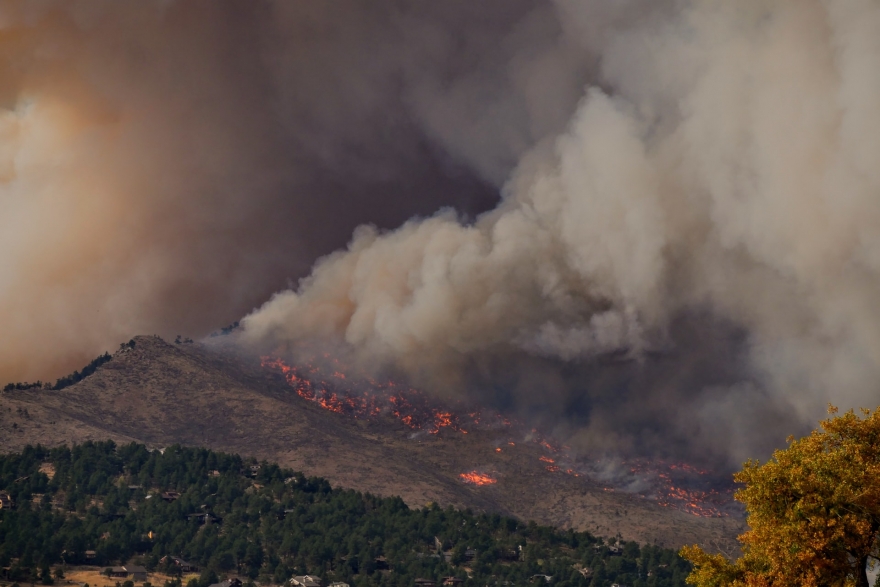Wildfires across Canada are an annual concern, impacting not only the regions that are actually on fire, but the air quality in almost all of the country’s populated areas. This year’s fires have been worse than usual.
During the last week of July there were almost 300 wildfires burning in British Columbia, 167 in Saskatchewan, 138 in Manitoba and 174 in Ontario. Earlier in the summer, 1,000 people living in and near the town of Lytton, B.C. were evacuated before fire destroyed most of the village. Two people were killed.
Smoke from burning forest fires prompted Environment Canada to issue special air quality statements for many areas across the country. In Toronto, smoke from the Northern Ontario fires made the air so smoky that it ranked fourth on a list of cities with the worst air quality in the world.
The B.C. Wildfire Service reports that the 10-year average number of wildfires is 642 – but as of late July, there had already been 1,231 fires this year.
The service says that lightning strikes account for about 60 per cent of wildfires in the province, with the other 40 per cent caused by preventable person-caused activities such as open burning, the use of engines or vehicles, dropping burning materials such as cigarettes or other human-related activities.
Environment Canada says smoke from wildfires contains chemicals that can be harmful to your health. It says residents may show symptoms including throat irritation, headaches, shortness of breath or increased coughing.
Young children, elderly people and those with chronic conditions may be more sensitive to the smoke and should take precautions, even if the smoke is light to moderate, says The Province of Manitoba. Its Environmental Health Branch of the Public Health Division offers some suggestions for dealing with the smoke:
- limit outdoor activities, especially if it makes you tired or short of breath
- stay inside and keep the windows closed. If you have air conditioning, set it to “recirculate”. If you don’t have air conditioning, try going to an air conditioned place such as a mall or library
- limit strenuous indoor activities if you have been exposed to smoke
- don’t burn anything, including wood stoves, gas stoves and even candles
There are several things that Canadians who have homes or recreational properties in areas at risk of a fire can do to make their property more fire-resistant, according to FireSmart Canada.
It says half of the homes destroyed in wildfires are caused by sparks and embers, which ignites leaves and debris in the corners and crevices of the home and yard. Changes within 10 metres of your home will have the biggest impact on making the property more fire-resistant.
Clean out the eves, under the deck or porch and any other crevices near the house. Propane tanks should be clear of vegetation and at least 10 metres from combustibles and buildings. The same goes for burn barrels and fire pits.
Don’t stack firewood against the house – it should also be away from buildings, and the storage area should be cleaned regularly. Don’t use bark or pine needle mulches close to buildings – gravel or crushed rock mulch significantly reduces risk, says FireSmart Canada.
If you are building a new home or cottage and adding landscaping, consider adding poplar, birch, aspen, cottonwood, maple, alder, cherry and ash trees – these deciduous trees are resistant to wildfires. The coniferous trees to avoid are juniper, spruce, fir, pine and cedar.
Plant low-density plants and shrubs and maintain a 1.5-metre non-combustible zone around the home and outbuildings.
“A mowed lawn is a fire-resistant lawn,” says FireSmart. “Grasses shorter than 10 cm are less likely to burn intensely.”
In the area extending from 10 to 30 metres away from your home, try to thin and prune trees so there isn’t as much fuel for a wildfire. The crowns (tops) of individual trees should be at least three to six metres apart. Remove tree branches up to two metres from the ground.
Fires spread uphill more easily, so if your house is on the top of a hill, try to keep the trees spaced out even further away on downhill slopes and windward exposures.
If you are building or renovating, take care to choose the most fire-resistant building materials. On the roof, unrated wood shingles don’t provide any protection from fire. Metal, clay tile and asphalt shingles are the most fire-resistant choices.
Eves should be closed in, and vents and soffits must be screened. As mentioned, the area under a deck or porch should be kept clear, but it’s better if there’s a skirt around the deck to close it in.
On the walls, stucco, brick, metal and concrete provide good fire resistance. Logs and heavy timber are less effective and wood and vinyl siding offer little protection, says FireSmart. Tempered, thermal or smaller double-paned windows offer better protection than single-pane glass.
Make sure the address of your property is clearly marked. If you have a large property, make sure the driveway is accessible for a fire truck. The driveway should have a turnaround and two access routes are preferable.
Finally, every home should have shovels, rakes, axes, garden hoses, sprinklers and ladders to help with suppressing small fires, says FireSmart.








